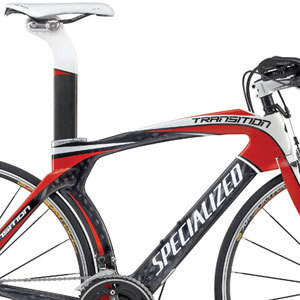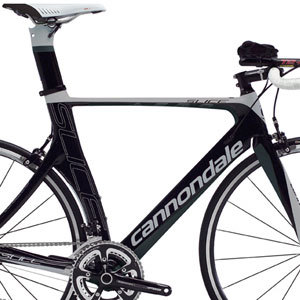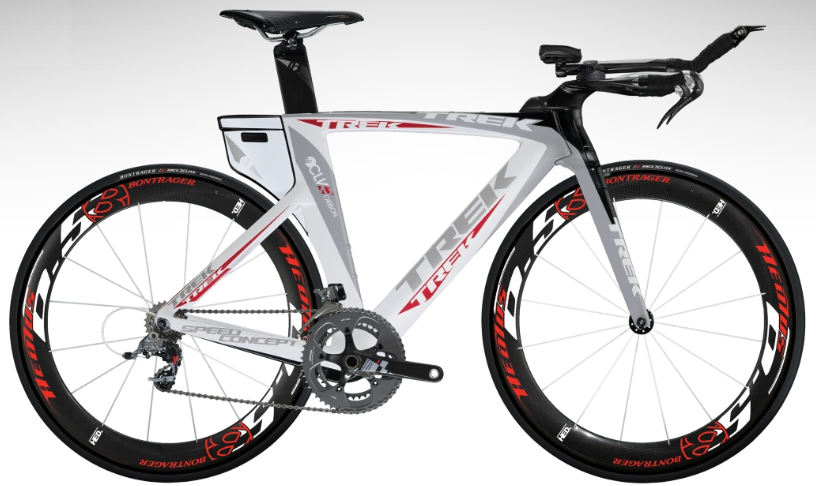For 2010 the majors are all in

For twenty years and more, the world’s largest bike companies—Trek, Specialized, Cannondale and Giant—did not know how to approach triathlon. They didn’t understand the zeitgeist; nor the nature of aero bars and how that impacted the riding experience; nor the market trends. They never knew whether the market was worth the fincancial commitment, so they never knew when to push their chips forward and go "all in."
Predictably, then, every time one of these companies tried to compete, it brought a knife to a gunfight. And this is why $20 million, $7 million, and even $2 million companies routinely outsold and frankly routed the $100 and even $500 million companies when competing for the triathlon space.
If there is one theme for 2010, it is that the big boys have finally come to play. Triathlon has their attention. This, for two reasons: They have to make these bikes anyway, for their pro tour and pro continental teams, and triathlon is the only place to amortize these design costs; second, the triathlon market is now big enough to absorb a large number of these bikes, and the per-unit transaction is much, much higher than in any other category.
Still, if you want to separate between the major bike companies that are (or soon will be) successful in tri from those that are (or will be) less so, there is a reliable way to distinguish between between them. Trek, Cervelo and Felt are three brands making tri bikes that will be used by their pro cycling teams. Giant, Orbea, Colnago, Pinarello, Time all make TT bikes that they may hope to sell to triathletes. Or so it appears to me, and in several cases these companies bluntly state that these are their design priorities.

When a major bike brand makes a tri bike—with the only sop to pro cycling being UCI-legal 3:1 aspect ratios—it stands a much better chance of selling these bikes to triathletes in much higher numbers than those making pro TT bikes.
This, because the geometries triathletes need are easily adaptable to pro TT riding, because it's easier and safer to slide a saddle back and shorten up a stem than to move a saddle foward and lengthen a stem (this, because there is so much weight already on the front wheel of a TT/tri bike). In short, Cervelo proved it's no problem to retask a tri bike as a TT bike, while many European companies proved that their TT designs were not only very ill-suited to triathletes, they weren’t even very good TT geometries.
And why wouldn't this be the case? TT riders pretty much ride as do pro triathletes. Just about all pro road racers get one of two morphological exceptions for the asking, they just don’t get both. The hardest thing about riding the position you want, if you're a pro cyclist, is that you're forced to really nose-ride your saddle (more so than a pro triathlete).
So, Trek, Felt, Cannondale, Specialized and Cervelo have all awakened to smell the coffee, and each of these companies make tri bikes that easily fit triathletes, while a lot of other companies—chiefly European brands—still fundamentally (and willfully, it seems) misunderstand that adding aero bars to a bike changes the way a rider must sit aboard his bike. They have not grasped the nature of aero bar riding, even though they've had 20 years to study it. Further, their collective body language suggests that they have no interest in peeking over the pond to see what the American companies (plus Cervelo) are doing to compete in this space.
Not all the European brands are so myopic. Still, the majority are making 75°, short head-tubed, TT bikes, and these fail the test of utility, both for triathletes and for the pro cyclists they sponsor.

If you want an insight into who will be the serious players in the tri market for 2011, here is what you'll want to look for:
-Are tri bikes being sold to triathletes, or are TT bikes being repackaged and retasked for triathlon?
-Are the most upscale molds offered as complete bikes in prices down to the mid-$2000s?
-Can the bike's seat angle make it to 80°
-Is the company facing and fixing, as needed, any distribution hurdles?
About that last point: if Specialized, Trek and Cannondale are not able to compete heads-up with Felt, and make inroads on Cervelo, you can blame distribution. These companies have committed so much time and energy partering with large, full-service retailers, they’ve nailed their fortunes to these retailers, many of whom are not versed in tri-specificity. In fact, it is much harder to invest these shops with tri mojo than it is to simply establish a parallel set of tri-only retailers for their tri-only bike models.
Which companies will have the nerve, and the skill, to set up this parallel distribution network? The bikes Specialized, Trek and Cannondale make are now sufficiently high caliber that the product and the pricing is not an issue; rather, which of these three brands can outsell the other into the retail stores that tend to sell to triathletes?




Start the discussion at slowtwitch.northend.network